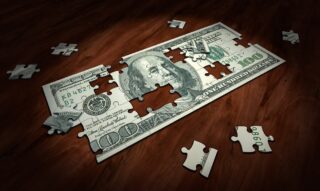Probability of a Recession in the US Economy in 2026

The question of whether the US economy will face a recession in 2026 is one of the most debated topics among economists, policymakers, and investors. With shifting monetary policies, persistent inflation concerns, and global uncertainties, the American economy stands at a crossroads. While some experts remain cautiously optimistic, others warn that the probability of a downturn is higher than usual.
In this article, we’ll examine the probability of a recession in the US economy in 2026 by looking at historical trends, current data, and expert forecasts. We’ll also explore potential scenarios, sectoral impacts, and strategies for individuals and businesses to prepare for economic volatility.
Understanding Recessions: Definition and Key Indicators
A recession is commonly defined as a decline in GDP for two consecutive quarters, but economists often use broader indicators. These include rising unemployment, falling consumer spending, and reduced industrial production. The National Bureau of Economic Research (NBER), the official authority in the US, takes a more comprehensive approach, focusing on depth, diffusion, and duration of economic decline.
Common Triggers of Economic Downturns
Recessions can be triggered by several factors:
- High interest rates that restrict borrowing and investment.
- Inflation spikes that erode purchasing power.
- Global shocks, such as wars, pandemics, or supply chain disruptions.
- Financial market instability driven by over-leveraged banking systems or excessive corporate debt.
Historical Patterns of US Recessions
Studying history provides valuable context for future forecasts.
The Great Depression (1929)
The most severe economic collapse in US history, marked by mass unemployment, stock market crashes, and a collapse in banking.
The 2008 Global Financial Crisis
Triggered by the housing bubble and reckless financial practices, this crisis reshaped global banking and regulatory frameworks.
The 2020 Pandemic-Induced Recession
Unlike previous downturns, this was caused by a health crisis that halted economic activity. Swift government stimulus helped the economy rebound faster than expected.
Current State of the US Economy (2025 Snapshot)
To understand the probability of a recession in 2026, we need to assess the economic health as of 2025.
GDP Growth Trends
The US economy has shown moderate growth, but forecasts suggest a slowdown due to tightening monetary policy and global trade headwinds.
Inflation and Federal Reserve Policies
While inflation has cooled from its 2022 peak, it remains above the Fed’s 2% target. The central bank continues to balance inflation control with growth stability.
Labor Market and Unemployment Rates
The labor market remains strong, but wage growth is slowing. Economists warn of potential layoffs if demand weakens.
Consumer Spending and Confidence Index
Consumer spending, a major driver of the US economy, shows resilience. However, rising interest rates may dampen household spending power in 2026.
Expert Predictions for 2026
Leading financial institutions such as Goldman Sachs, JPMorgan, and Moody’s Analytics have shared varied perspectives. While some expect a slowdown due to restrictive monetary policy, others believe the economy could achieve a soft landing—avoiding a deep recession but experiencing slower growth.
IMF and World Bank Projections
The International Monetary Fund (IMF) projects modest US growth, warning that global risks, especially energy market volatility and trade tensions, could tip the economy into recession. The World Bank echoes these sentiments, highlighting the growing burden of debt as a key vulnerability.
Federal Reserve Outlook
The Federal Reserve remains cautiously optimistic but acknowledges downside risks. It aims to control inflation without stalling growth. Still, an extended period of high interest rates could increase the probability of a recession in 2026.
Key Factors Influencing the Probability of a Recession in 2026
The Fed’s decision to maintain or cut interest rates will be pivotal. Prolonged high rates may curb borrowing and investment, increasing recession risks.
Inflationary Pressures
Persistent inflation remains a challenge. If wages fail to keep pace with price increases, consumer demand may shrink, slowing growth.
Global Trade and Geopolitical Risks
Tensions in the Middle East, US-China relations, and European energy security could disrupt global supply chains, impacting the US economy.
Corporate Debt and Banking Stability
High corporate debt levels and the risk of bank instability could trigger financial stress similar to the 2008 crisis, especially if interest rates remain elevated.
Probability of a Recession in the US Economy in 2026: Statistical Forecasts
Economic models suggest a 30–40% probability of a US recession in 2026, depending on variables such as interest rates, unemployment, and global trade flows.
AI and Predictive Analytics in Economic Forecasting
Advancements in AI-driven models allow analysts to integrate big data, from consumer behavior to global shipping volumes, improving accuracy in recession forecasting.
Possible Scenarios for 2026
Growth slows but doesn’t collapse. Inflation moderates, unemployment stays low, and the Fed reduces interest rates gradually.
Moderate Downturn: Short-Term Recession
A mild recession lasting a few quarters, with manageable job losses and a quick recovery driven by government intervention.
Severe Recession Scenario
Triggered by global shocks or financial crises, leading to widespread unemployment, a stock market crash, and prolonged stagnation.
How a Recession in 2026 Could Impact Key Sectors
A recession often leads to volatile stock markets, declining corporate earnings, and reduced investor confidence. Defensive sectors like healthcare and utilities may outperform.
Housing Market Outlook
High mortgage rates could slow housing demand, lowering prices. However, supply shortages might cushion the downturn.
Employment and Wages
Job losses typically increase in recessions, especially in retail, hospitality, and manufacturing. Wage growth may stagnate or decline.
Small Businesses and Startups
Small businesses, heavily reliant on credit, may struggle under high borrowing costs and reduced consumer demand.
Strategies for Individuals to Prepare for a Possible Recession
Personal Finance Tips
- Build an emergency fund covering 6–12 months of expenses.
- Avoid unnecessary debt and prioritize high-interest loan repayments.
- Strengthen savings habits.
Investment Diversification
Diversify into bonds, gold, and defensive stocks to minimize exposure to market downturns.
Career and Skill Development
Upskilling in high-demand industries like technology, healthcare, and renewable energy can provide job security during downturns.
Strategies for Businesses to Mitigate Risks
Businesses should cut unnecessary costs, renegotiate contracts, and improve operational efficiency.
Supply Chain Resilience
Diversifying suppliers and sourcing locally can reduce risks from global disruptions.
Innovation and Adaptability
Companies investing in digital transformation and customer-driven innovations tend to weather recessions better.
Government Policies and Stimulus Measures
The government may deploy tax cuts, infrastructure spending, or direct stimulus payments to boost demand.
Monetary Policy Interventions
The Federal Reserve could reduce interest rates or expand credit access to support growth.
Social Safety Nets
Programs like unemployment benefits, food assistance, and healthcare subsidies can shield vulnerable populations during downturns.
Global Economic Context and Its Influence on the US
A slowdown in China could hurt global trade, particularly in technology and manufacturing sectors.
Europe’s Growth and Stability
Energy crises, debt challenges, and political instability in Europe may impact global confidence and trade.
Emerging Markets and Global Trade Shifts
Shifts in global trade routes, especially in Asia and Latin America, could affect US exports and investment opportunities.
FAQs on the Probability of a Recession in the US Economy in 2026
1. What is the probability of a US recession in 2026?
Experts estimate a 30–40% chance, depending on inflation, interest rates, and global risks.
2. What could trigger a recession in 2026?
High interest rates, persistent inflation, global trade disruptions, or financial market instability.
3. How would a recession affect ordinary Americans?
It could lead to job losses, reduced wages, higher borrowing costs, and lower stock market returns.
4. Can the government prevent a 2026 recession?
Not entirely, but fiscal stimulus and monetary policy adjustments can minimize its severity.
5. What sectors are most vulnerable?
Retail, housing, hospitality, and small businesses are typically hit hardest.
6. How should investors prepare for 2026?
By diversifying portfolios, holding defensive assets, and maintaining long-term investment strategies.
Conclusion: Will the US Face a Recession in 2026?
The probability of a recession in the US economy in 2026 remains significant but not guaranteed. While inflation, high interest rates, and global tensions raise concerns, strong consumer demand and resilient labor markets provide reasons for optimism. The most likely scenario is a moderate downturn or soft landing, rather than a severe crash.
For individuals and businesses, preparation is key. By adopting prudent financial strategies, investing wisely, and staying adaptable, Americans can weather potential challenges in 2026 and beyond.




